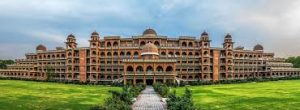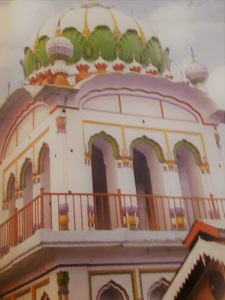Peshawar has a lot to offer, so we will travel across the city to briefly look at some more fascinating places and one also finds tombs of sufis who made many efforts to promote Islam in the region.
Peshawar Museum
It is a matter of great pride that our Museum has the biggest and most valuable Gandharan Art collection in the World! It is a very impressive building where the main hall is over 100 years old (built in 1906-07 to commemorate Queen Victoria and can be seen below). Two more halls were added in 1969-70. While the second storey was added a few years later.
It truly holds a treasure trove, with 14168 objects such as sculptures, coins, copies of the Holy Quran, Miniature Paintings, Persian handicrafts, Dresses, Weapons, Jewellery and Kalash statues.
Islamia College University (ICU)
Another historical and magnificent building which is located six miles away from the Khyber Pass and was built in 1913. It is the oldest institute offering higher education in Pakistan. Addressing the students of the college on April 12, 1948, Quaid e Azam Muhammad Ali Jinnah said: “Let me tell you that nothing is nearer to my heart than to have a great center of culture and learning in a place like Peshawar, a place from where the rays of knowledge and culture can spread throughout the Middle East and Central Asia.”
Its architecture is a lovely blend of Mughal and revived Gothic features. It is a unique combination of geometry, proportion and symmetry.
Sikh Gurdwara of Bhai Joga Singh
Bhai Joga Singh was the disciple of Guru Gobind Singh (the tenth Sikh Guru). It is a beautiful three storied building (shown below) situated in namakmandi, where local and foreign sangata (meetings) take place daily. There is also a Punjabi school for Sikh children which imparts both regular and religious education.
Tomb of Nawab Sayid Khan
Nawab Sayid Khan was the Governor of Kabul during the reign of Shah Jahan. His tomb is a dome shaped building. It stands in the premises of the once Afghan Mission Hospital which was converted into a church in 1926.
Tomb of Akhund Darweza
In the south of Peshawar city, near the site of Shah Ji ki Deri is the tomb of this prominent Sufi Saint who lived during the reign of Shah Jahan. According to myth he had the God gifted ability of sharpening the dull child’s mind, so children were sent to him for studying the Holy Quran.
Tomb of Rehman Baba
Nearby is the tomb of this mystic poet who wrote sufi and religious poetry. His real name was Abdul Rehman, and he lived in the high hills of Mohmand. He became famous by the name of Rehman Baba.
Old Punch Tirath
It literally means five holy places. It was a very famous place for Hindu worship before 1947. It is located near the Grand Trunk Road.
Jamurd Fort
It was constructed in 1836 by Hari Singh Nalwa, one of the bravest generals of Maharaja Rangit Singh. He was killed while fighting the Afghans at the fort and his ashes are buried there. It is a mud building and is located in Jamurd, which is 18 km west of Peshawar. It was originally named Fatehegarh. An arch called Bab-e-Kyber (gateway to Khyber) was built in 1964.
Tomb of Shiekh Imam-ud-din
And 15 km from the old city, as one drives on old Michini road, you will come across the tomb of this saint who lived in Shah Jahan’s era. A small mosque named after him can be found in close proximity. The village where it is situated is called Palsoi Piran. Both are under the protection of Federal Government’s Antiquities Act of 1975.



